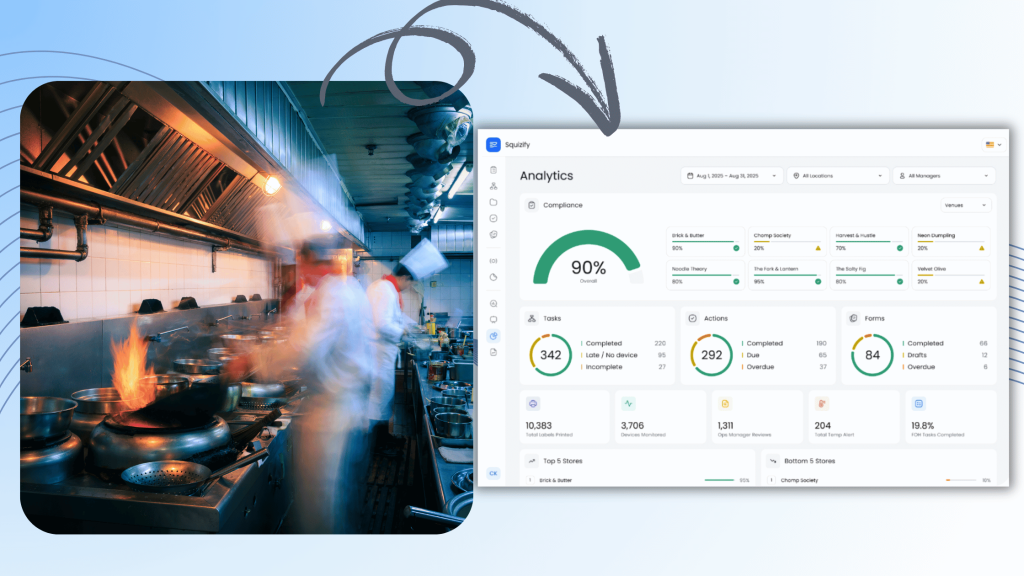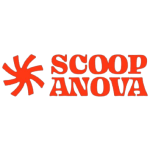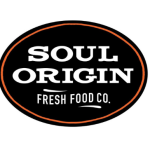5 Steps to Ensure Your Food Business is HACCP Certified in 2025

Top 3 Food Safety Audit Fails That Could Cost Your Restaurant Millions

What Are the Signs Your Business Needs Digital Food Safety Software?
As your food business grows, relying on manual tracking methods becomes impractical. Paper-based systems can lead to inefficiencies, missing records, and compliance risks, especially when production volumes and processes become more complex.
Digital food safety software offers solutions to these challenges:
- Real-time monitoring across multiple locations and processes
- Automated record-keeping eliminates paper-based inefficiencies
- Centralised data management ensures complete traceability
- Streamlined compliance with food safety regulations
- Reduced human error through systematic digital processes
Transitioning from manual to digital systems is not just about keeping up with the times—it’s about building a strong foundation for future growth. Here are some signs that indicate your food business may be ready for this change:
1. Increasing Complexity of Operations
Modern food businesses face mounting operational challenges as they expand their product lines and service offerings. A single kitchen now handles multiple food preparation processes, diverse supplier relationships, and intricate storage requirements.
Key operational complexities include:
- Multiple temperature monitoring points across preparation, storage, and serving areas
- Ingredient traceability requirements from receiving to final product
- Allergen management across different preparation stations
- Staff scheduling for food safety supervision
- Equipment maintenance tracking and documentation
Food safety management software transforms these complex processes into manageable digital workflows. Digital systems enable:
- Real-time temperature logging with automated alerts
- Instant access to supplier certificates and delivery records
- Digital allergen matrices for each menu item
- Automated staff qualification tracking
- Equipment maintenance schedules with digital sign-offs
A quality management system creates standardised processes across all operational areas, reducing the risk of non-compliance and streamlining daily tasks. Food safety managers can track activities across multiple locations from a single dashboard, ensuring consistent standards and rapid response to any issues.
2. Frequent Human Errors in Documentation
Manual documentation creates significant risks in food safety management. Common mistakes include:
- Illegible handwriting on temperature logs
- Missing or incomplete checklist entries
- Incorrect time stamps on critical control points
- Lost or damaged paper records
- Data entry errors during busy periods
These human errors can lead to serious food safety breaches and compliance issues. A single mistake in temperature recording could result in unsafe food storage conditions going unnoticed.
Digital food safety software eliminates these risks through:
- Automated Data Collection: Temperature sensors provide accurate readings without manual input
- Built-in Validation: Systems flag unusual entries and prevent incorrect data submission
- Digital Time Stamps: Automatic recording of exact times for all entries
- Cloud Storage: Secure backup of all records with no risk of physical damage
- Real-time Alerts: Immediate notification when readings fall outside safe parameters
Food businesses using digital HACCP software report up to 95% reduction in documentation errors, creating more reliable food safety systems and stronger compliance records.
3. Regulatory Pressure Driving Need for Change
Recent regulatory changes demand unprecedented levels of documentation from food businesses. The Food Standards Code now requires:
- Real-time temperature monitoring records
- Detailed allergen control documentation
- Complete supply chain traceability
- Regular staff training verification
These stringent requirements create significant administrative pressure on businesses still using paper-based systems. Digital food safety software automatically captures required data points and generates food safety compliance reports in seconds. The automated documentation ensures businesses meet regulatory standards without drowning in paperwork.
4. Lack of Real-Time Visibility Across Operations
Real-time visibility across food safety operations remains a critical challenge for growing businesses. Manual monitoring systems create dangerous blind spots in:
- Temperature control tracking
- Allergen cross-contamination risks
- Equipment performance metrics
- Stock rotation compliance
- Critical control point verification
Cloud-based food safety platforms deliver instant visibility through centralised dashboards. Managers can monitor multiple locations and production lines simultaneously, spotting issues before they escalate into major problems.
Digital sensors provide automated wireless temperature monitoring across refrigeration units, cooking equipment and transport vehicles. Immediate alerts notify staff when readings fall outside safe ranges, enabling rapid corrective actions.
5. Inefficient Audits Hindering Business Growth
Traditional audit processes drain valuable time and resources from your business operations. Manual audit preparation involves:
- Searching through paper records across multiple locations
- Piecing together incomplete documentation
- Cross-referencing scattered information from various sources
- Reconciling inconsistencies in handwritten records
Digital food safety audit software transforms this tedious process into a streamlined workflow. Modern solutions offer:
- Centralised Document Storage: Access all records instantly from a single dashboard
- Smart Search Functions: Find specific records using dates, categories, or keywords
- Automated Report Generation: Create audit-ready reports with a few clicks
- Digital Audit Trails: Track all food safety activities with time stamps and user accountability
These features reduce audit preparation times by up to 75% while ensuring complete and accurate documentation. Your audit-ready status becomes a competitive advantage rather than an operational bottleneck.
6. Difficulty Training Staff on Protocol Adherence
Staff training challenges can directly impact food safety standards. Inconsistent understanding of hygiene protocols leads to:
- Varied interpretation of cleaning procedures
- Incorrect handling of allergen-containing products
- Improper temperature monitoring practices
- Inconsistent documentation methods
Digital food safety training software transforms traditional training approaches through:
- Mobile-accessible learning modules – Staff can access training materials anytime, anywhere
- Interactive quizzes – Real-time assessment of knowledge retention
- Video demonstrations – Visual guides for proper protocol execution
- Progress tracking – Managers can identify knowledge gaps quickly
A centralised system ensures standardised training across all locations. Digital tools enable automatic updates to training materials when protocols change, keeping staff knowledge current and reducing the risk of food safety breaches.
7. Goals for Business Growth Outpacing Manual Processes
Manual processes create bottlenecks that restrict business growth. Paper-based systems struggle to handle increased transaction volumes, multiple locations, or new product lines. These limitations directly impact:
- Quality Control: Manual tracking becomes error-prone at scale
- Compliance Management: Higher risk of missing critical documentation
- Resource Allocation: Staff spend excessive time on paperwork
Digital food safety software scales seamlessly with your business growth. Advanced platforms like Squizify adapt to:
- New product categories
- Additional facility locations
- Expanded supplier networks
- Increased staff numbers
Why Choose Squizify as Your Digital Food Safety Software?
Squizify offers a complete food safety quality management software tailored for today’s food production industry. Our HACCP-compliant software simplifies risk management through:
- Automated Record-Keeping: Access data 24/7 via internet-connected devices
- Custom Checklists: Tailored to your specific operational needs
- Temperature Monitoring: Real-time sensors and freight tracking
- Integrated Label Printing: Ensure accurate product labelling
We cater to various sectors such as hospitality, healthcare, aged care, childcare, supermarkets, and manufacturing facilities. Our secure SaaS platform grows with you while upholding strict compliance standards.
Ready to enhance your food safety management? Book a demo with Squizify today and find out how our solutions can safeguard your business and customers.




